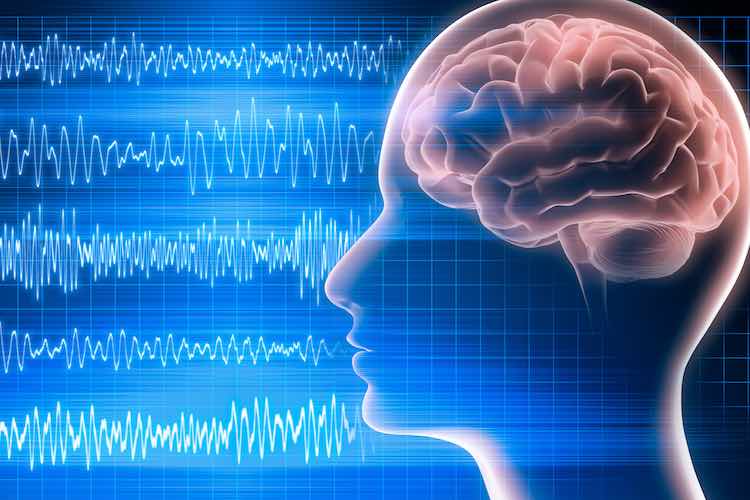What is an EEG?
Your brain is active all the time, and its cells communicate with each other via electrical signals. An electroencephalogram (also called an EEG) is a special test that records these electrical signals that occur within the brain.
What conditions can be diagnosed using an EEG?
An EEG can be used to help diagnose and assess several conditions that affect the brain, particularly epilepsy (a condition that causes seizures). Some of the other conditions for which doctors may want to perform an EEG include:
- head injury;
- brain tumour;
- encephalitis (inflammation of the brain);
- stroke; or
- sleep disorders.
Doctors can also use an EEG to confirm brain death in someone who is in a coma.
How is this test performed?
An EEG involves measuring and recording the electrical activity within your brain. To do this, usually between 16 and 25 electrodes (small, flat metal discs) need to be placed on your scalp, over different areas of your brain. The electrodes may be stuck to your scalp using a special adhesive paste, or you may wear an elastic cap that is fitted with electrodes.
The electrodes are connected to wires, which send information to an amplifier and recording device. Your brain’s electrical activity is seen as a pattern of waves on the EEG machine, which can be printed on graph paper.
You will be asked to recline or lie down with your eyes closed for most of the test, and to stay as still and relaxed as possible. This is because movement and nervousness can affect the test results. You may be asked to perform a few simple tasks, such as reading, opening and closing your eyes, breathing deeply for a few minutes, or looking at a flashing light. These activities may trigger a change in the EEG pattern.
Where is an EEG usually done?
An EEG may be performed in a hospital outpatient department or a specialist doctor’s rooms. If your doctor wants you to have a video EEG — where you are monitored by a video camera while the EEG is in progress — you may need to have a short hospital stay. A video EEG is useful for providing a record of your EEG pattern during the exact time of any suspected seizure activity.
Sometimes your doctor will ask for an ambulatory EEG, where brain activity is recorded for a longer period of time (usually 24 hours) away from the hospital. The electrodes are attached to the scalp and plugged into a small portable recording device which is usually worn around your waist. During an ambulatory EEG you can still perform many of your usual activities, but there are some restrictions.
How long does the test take?
The test itself will take about 30-60 minutes. Placing the electrodes usually takes 20 minutes, but can take up to an hour, so the entire procedure may take about one to 2 hours.
If you have an ambulatory EEG, brain activity is recorded for 24 hours or more.
Preparation for an EEG
It is important that your scalp is not oily, so wash your hair on the day of the test (or the night before), but do not use any hair conditioner or other hair products, such as hair spray or styling gel.
You may be advised to avoid eating or drinking anything that contains caffeine (e.g. tea, coffee or chocolate) for 6 to 8 hours before your EEG. Some people may need to stop taking certain medicines before the test, but it’s important to only stop your medicines if instructed by your doctor.
Sometimes, it is necessary to have less sleep the night before the test, so that your doctor can assess the effect of sleep deprivation on your brain’s electrical activity. You may also need to have an EEG recording done while you are asleep. Some people may need to take a sedative to help them sleep during the test.
Risks and side effects
EEGs are generally very safe. There is a risk for people with epilepsy that the effect of certain stimuli on the brain may trigger a seizure during the EEG. However, there will be trained medical staff on hand if this does occur.
Having an EEG is not painful. It may be slightly uncomfortable having the electrodes attached, but the electrodes do not produce any sensation — they only record your brain’s activity.
Results
The EEG will show patterns of brain waves that can help your doctor determine whether there is a problem. A change in the normal pattern of brain waves may indicate epilepsy and can help determine the type of epilepsy.
It is not necessary for a seizure to occur during the test for epilepsy to be diagnosed, because people with epilepsy often have small changes in brain wave patterns even when they are not having a seizure. However, it is also true that a normal EEG result does not always rule out epilepsy, because some people with seizure disorders have normal EEG readings between seizures.
The EEG results will need to be interpreted by a specialist before any formal diagnosis can be made. You should make a follow-up appointment with your doctor to discuss your test results.

